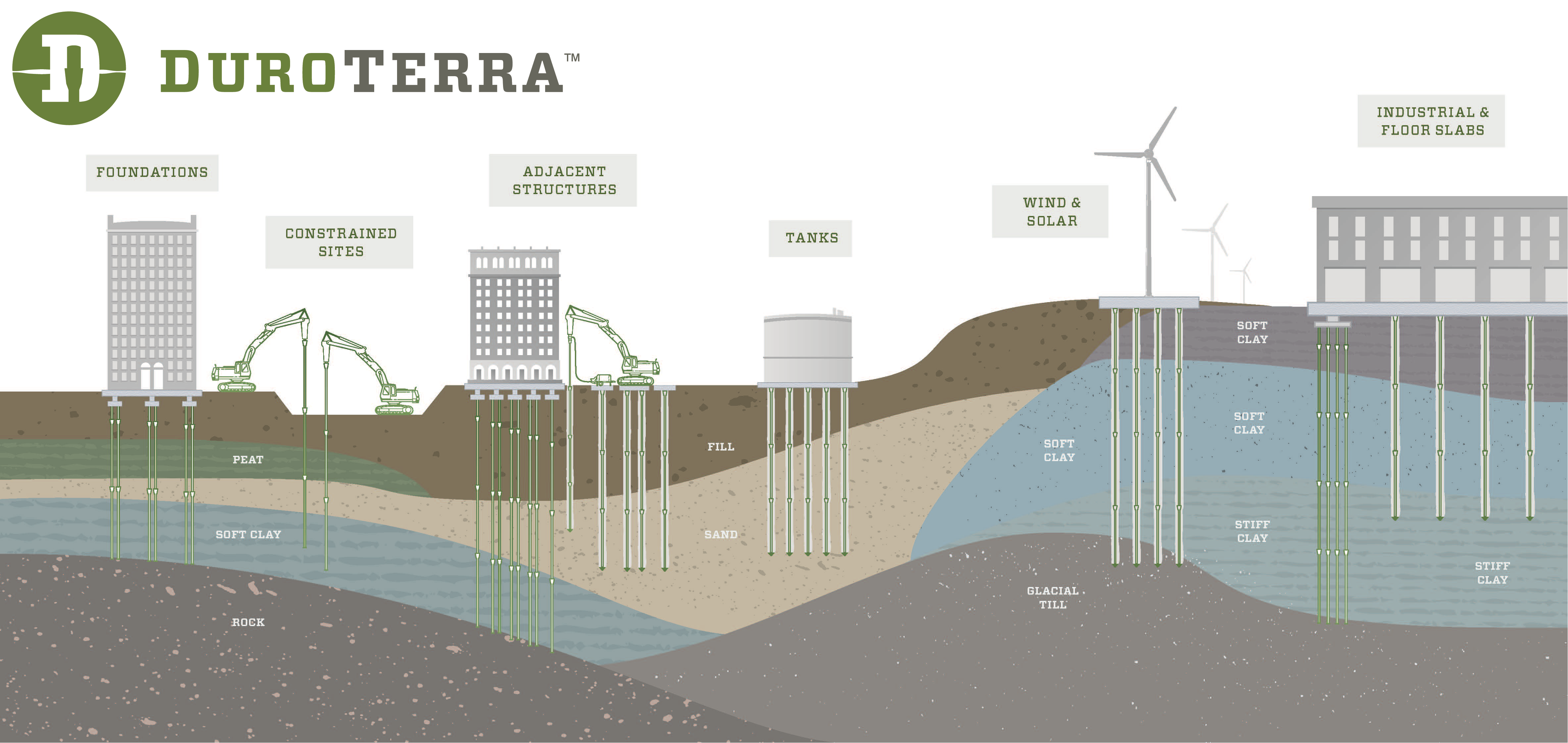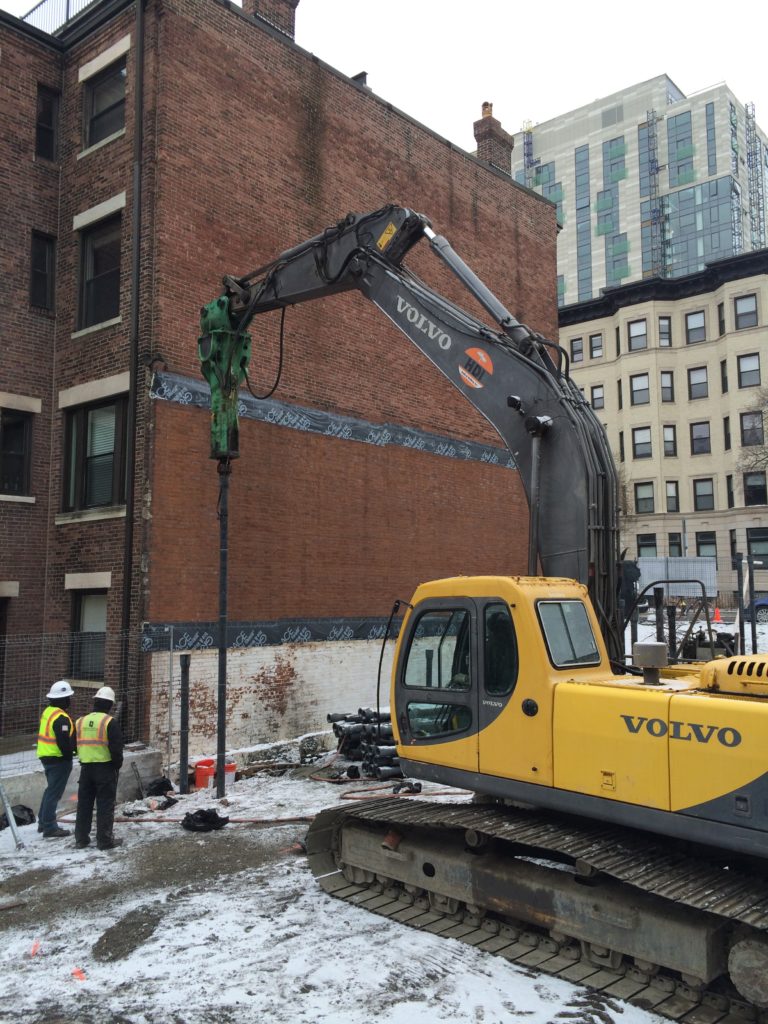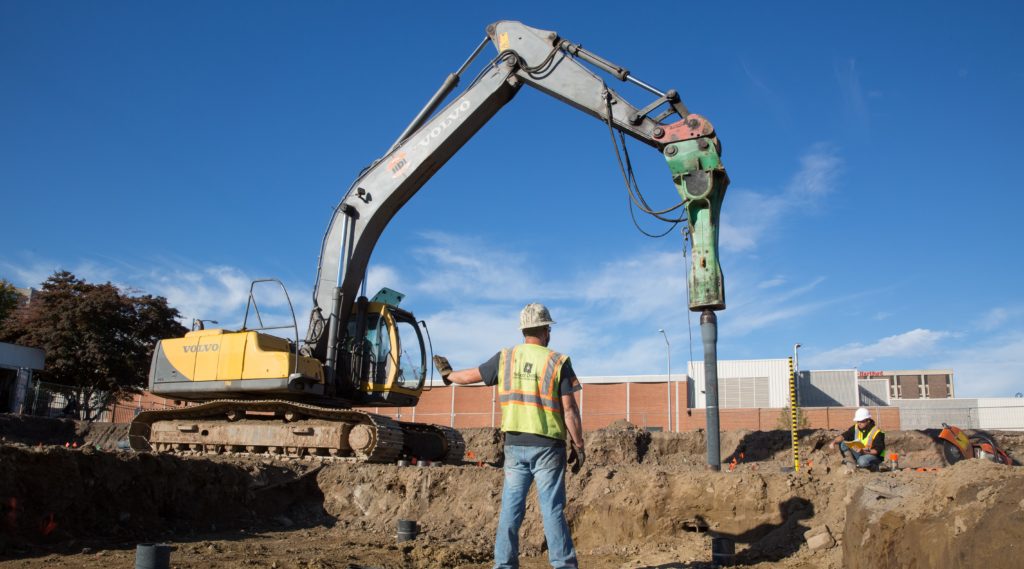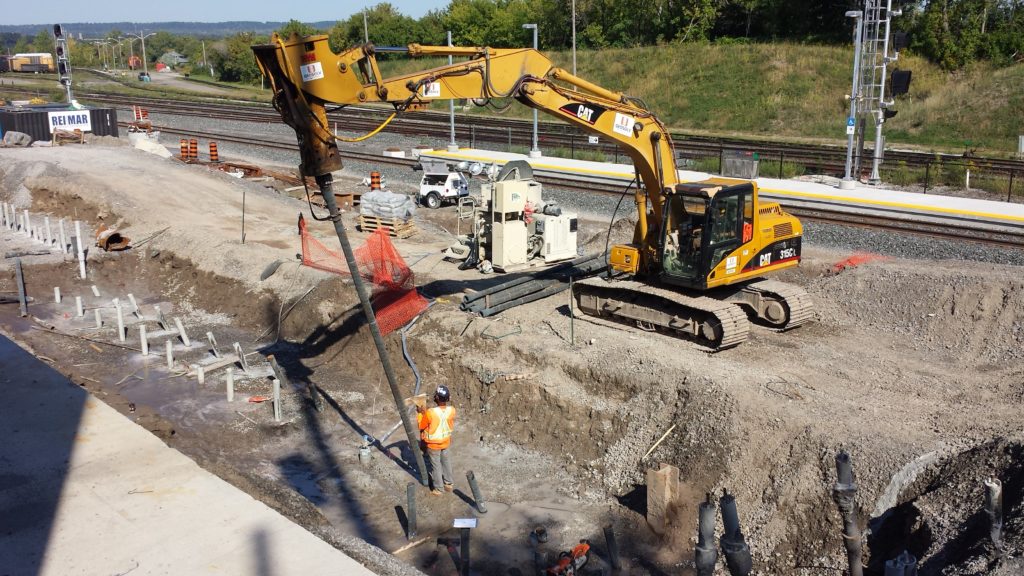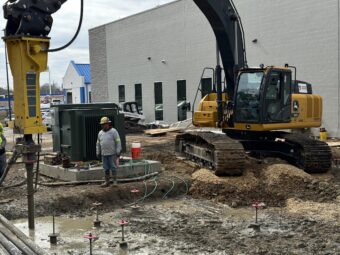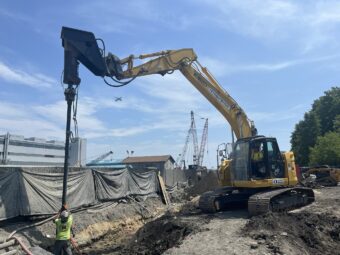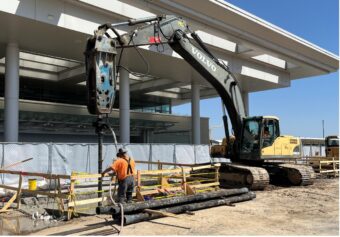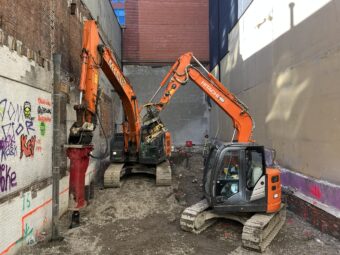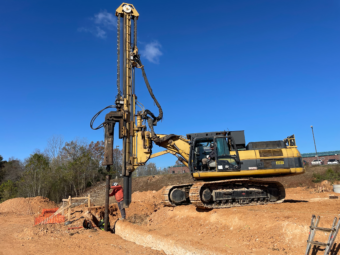Breaking Traditions – Ductile Iron Piles replace Steel H-piles
Breaking Traditions – Ductile Iron Piles replace Steel H-piles
- Low vibrations
- Ability to work in tight access or restricted overhead conditions
- Limited site laydown requirements
- Plug and Drive connection eliminates field welding on long piles
- Reduced pad preparation
- Work from variable grades
- Enhanced safety by using stable excavators in place of large, masted piling rigs
Interested in evaluating a Ductile Iron Pile alternative to H-piles (or any other deep foundation option)? Please don’t hesitate to contact us. Our engineers are ready to develop a project-specific feasibility assessment, preliminary design approach and material quote to evaluate the potential value offered by TRM’s Ductile Iron Piles. Looking for more information? Please take a look at the following projects where H-piles were replaced by Ductile Iron Piles. FAST. SIMPLE. SAFE.
Relevant projects
Construction of the new 8-story hotel near the new Dunkin’ Donuts Park Baseball Stadium required deep foundations to provide support at the site characterized by undocumented fill and compressible silt over rock. The project was initially specified for 100-ton steel H-piles to support the column loads ranging from 400 to 800 kips. With winter construction approaching, a Ductile Iron Pile alternative was selected by the project team to save both cost and time to help accelerate foundation construction. A Series 170/9.0 Ductile Iron Pile with a #9 Grade 75 threadbar bar was designed to provide a 100 ton compression capacity to match the H-piles on a 1:1 basis. All piles were driven to achieve “set” on rock at depths on the order of 30 to 40 feet. In isolated locations requiring tension resistance up to 18 tons, piles were installed with oversized grout shoes to develop frictional capacity from a 10-inch diameter grouted displacement column. Compression load testing performed to 400 kips showed less than 1 inch of deflection.
Construction of the West Harbour GO Station included a concrete segmental retaining wall running adjacent to an existing roadway abutment. Plans originally required the use of steel H-piles to penetrate 20 ft of fill followed by up to 35 feet of sand underlain by up to 70 ft of soft to stiff clay and terminate on glacial till / rock at depths up to 100 ft. However, retaining wall support required a combination of vertical and battered piles to provide resistance to both vertical and horizontal loads. The H-pile installation was logistically challenged due to excessive vibrations, extended working pad and laydown area requirements and access issues requiring excessive splicing of battered piles. A low vibration Ductile Iron Pile alternative was selected to efficiently install both vertical and battered piles at the site. The piles were successfully installed working from variable grades in close proximity to both the active railroad as well as the existing abutment. A load test performed to 233 kips confirmed the design load. A total of 74 piles were installed in only 12 shortened work days helping avoid schedule delays associated with the H-piles.

